What's New
Displaying results 1921 - 1930 of 4052

Resource | Presentations,
Global Consultation on the Programmatic Management of Latent Tuberculosis Infection
Date: 27-28 April 2016
Venue: Hotel President, Seoul, Republic of Korea
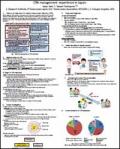
Resource | Presentations,
Moderated Poster Presentation and Discussion (Market place): Japan.
Global Consultation on the Programmatic Management of Latent Tuberculosis Infection
Date: 27-28 April 2016
Venue: Hotel President, Seoul, Republic of Korea

Resource | Presentations,
Global Consultation on the Programmatic Management of Latent Tuberculosis Infection
Date: 27-28 April 2016
Venue: Hotel President, Seoul, Republic of Korea

Resource | Presentations,
Global Consultation on the Programmatic Management of Latent Tuberculosis Infection
Date: 27-28 April 2016
Venue: Hotel President, Seoul, Republic of Korea
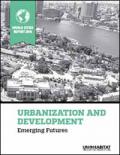
Resource | Publications,
The analysis of urban development of the past twenty years presented in this first edition of the World Cities Report shows, with compelling evidence, that there are new forms of collaboration and cooperation, planning, governance, finance and learning that can sustain positive change.
The Report unequivocally demonstrates that the current urbanization model is unsustainable in many respects, puts many people at risk, creates unnecessary costs, negatively affects the environment, and is intrinsically unfair. It conveys a clear message that the pattern of urbanization needs to change in order to better respond to the challenges of our time, to address issues such as inequality, climate change, informality, insecurity, and the unsustainable forms of urban expansion.
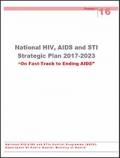
Resource | Publications,
The National Strategic Plan III (2017-2023) reflects the progress made in achieving a clearer understanding of the challenges posed by the HIV/AIDS epidemic and also the increasing unity of purpose among all the stakeholders, who are driven by a shared vision to attain the highest impact towards our long-term vision of ending the AIDS epidemic as public health threat in Bhutan.
The National Strategic Plan III outlines key interventions to bring the country close to the realization of its vision. Since the detection of first case in 1993, much has been done and much achieved. Building on strong leadership of our benevolent Kings and political commitments, the NSP III highlights the collective and effective interventions to break the HIV and AIDS chain.

Resource | Publications,
2016 was a year of consolidating, catalyzing and achieving incredible results, for the International Treatment Preparedness Coalition (ITPC). We pursued our strategic objectives: to mobilize demand for optimal HIV treatment; we supported civil society to challenge unfair barriers that limit access to essential HIV drugs; and we laid the ground for scaled up community monitoring of HIV treatment services. Our approach, of educating communities, and supporting community-based research and advocacy, informs all our programs.
In 2016, we began new projects to educate communities and mobilize them to demand routine viral load testing, as part of our Be Healthy – Know Your Viral Load campaign. Through 13 regional and national workshops we strengthened the capacity of 270 activists from 36 countries. Training included the science of HIV, HIV treatment monitoring and advocacy. National partners went on to sensitize communities on the need for routine viral load testing, and lobby policy makers to adopt and implement the latest WHO guidelines on treatment monitoring.
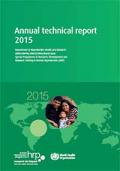
Resource | Publications,
The year 2015 has been an important year for the WHO Department of Reproductive Health and Research (RHR) to further build upon the strength of its work, including on priorities such as family planning, maternal health and adolescent sexual and reproductive health. The Department continues also to strengthen its commitment to a human-rights-based approach, as well as taking a global lead on critical issues.
The achievements made by the Department across its thematic areas are here united in this report. This document also underlines the urgency of work to be done collaboratively, to make crucial progress towards improving sexual and reproductive health and rights for people worldwide.
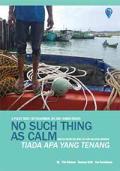
Resource | Publications,
The overall objective of this study is to explore HIV and human rights issues faced by fishermen in Malaysia.
Fisherfolk have consistently fallen through the net of many HIV research initiatives, particularly after the first HIV cases discovered among the fishing communities in the Ugandan Rakai district in 1982. To date in Southeast Asia, there are still only a handful of scientifically rigorous,
peer-reviewed research initiatives targeting fishermen that is representative of their communities and gives an overall view of their vulnerability.
Recent data show that 3.8% of Malaysia’s reported HIV cases have occurred among fishermen (MOH 2009). A comparison of HIV cases between fisherfolk and general population in Malaysia indicates that HIV prevalence rate is 10 times higher than the general population. Though these figures focus only on HIV prevalence, but brings-in the issues of associated vulnerabilities that place this community at higher HIV risk than the general population.
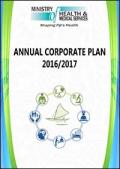
Resource | Publications,
The Annual Corporate Plan (ACP) 2016/2017 outlines the key strategies and performance indicators of the Ministry of Health and Medical Services (MoHMS) to guide and monitor progress towards achievement of the National Strategic Plan (NSP) objectives. The respective MoHMS units, including programs, departments, hospitals, divisions and subdivisions will align their respective Business Plans to this ACP. The MoHMS will utilise its well established monitoring and evaluation (M&E) system to monitor progress towards the implementation of this ACP.





